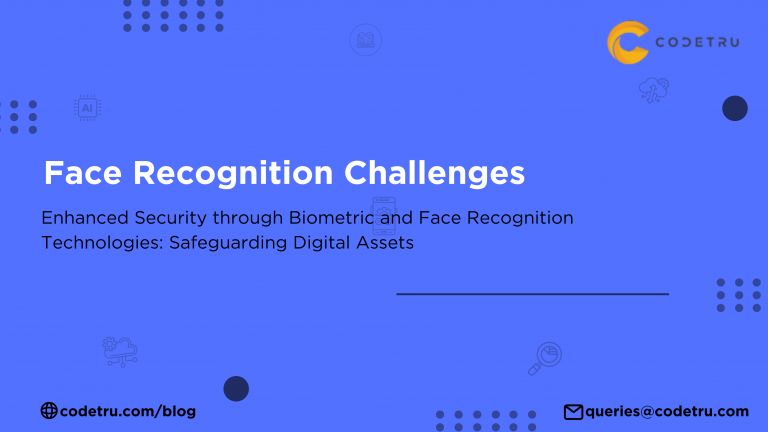The Worldwide Web has evolved over the last few years and connectivity is at its best in our times. We all are connected to this worldwide network and life seems to be on our fingertips so to speak. The digital world on one hand has been great, but on the other hand, there exist several loopholes that can very well be exploited by the digital thieves. There’s the danger of security breaches, computer break ins, credit card frauds, and other such damage to personal information of an organization or individual.
In 2019, cyber criminals made a total of $3.5bn and these were just the cyber crimes that were reported to the FBI. There have been many such crimes committed and organizations have lost millions of dollars in this ordeal over the years.
Stigma of Duplicate Identification
Cyber criminals find creative ways to get into the system. The hackers duplicate a user’s identification by using id cards, passwords, keys, pin numbers, and so on. Once they get their hands on these crucial details, it is easy for them to get authentication to get inside the system.
Once in, it becomes extremely easy for the digital thieves to access the personal property or critical data without any hassles. Although, the hackers have been successful in carrying out several identity thefts in the past, digital solutions have advanced and there has been better security implemented in the recent past.
Biometric: Security Feature to Organizations
In recent times, biometric has enhanced security for organizations. It makes it possible to differentiate between duplicate and true individual identification. Biometric controls are designed and equipped with verifying or recognizing the identity of a person based on unique features such as physiological characteristics, fingerprints, eye scanner, and face recognition. These unique characteristics of a DNA are highly complex and difficult to forge, and so biometric is a stable security feature for an organization.
Face Recognition
Face recognition has been widely accepted and is known to provide high accuracy and is less intrusive technology for organizations. It provides the unique physiological approach but without being too intrusive as some may wonder. The face recognition technology has existed since the early 70’s and since then researchers have been working on bettering it for security, image processing, computer vision, and so on. There are several research papers and detailed surveys that you can look up for the numerous algorithms proposed in face recognition in biometrics.
Evaluation Metrics for Face Recognition Performance
The following one or many areas may be the possible contributor in building such an intelligent system.
There are specific face recognition standards for indicate the identity, and they are:
FRR: False Rejection Rate
FAR: False Acceptance Rate
There exists FRR and FAR errors, and these are inversely proportional with each other. For example, if an ID system is designed or tuned to reject all the impostors it will minimize FAR, but at the same time the system may also reject some of the authorized users or it will increase the FRR as well. This is the reason why the system developers usually provide a variable threshold to customers so that they can strike a reasonable balance between the both. In a setup where a customer wants a rejection rate of impostors to a 100%, he will also have to bear with a 4% rejection rate of authorized users. Developers take good care to flatten the curve and ensure that there is a fine and acceptable balance between the FRR and FAR.
Face Recognition Framework
Face recognition framework is divided into two different functions and modules.
-
Face image detector is programmed to find the location of human faces from a normal picture when these are placed against either a complex or a simple background.
-
Face recognizer is programmed to identify who the person is based on the inputs from an image detector.
Both the modules follow the same framework and a feature extractor that gets the pixels of the facial image and then transforms it into a useful representation. The pattern recognizer then searches the database for details matching the pixel representation. There are several variations that can be programmed such as basic face and non face images to specific details such as John’s face, Eve’s face, and so on, based on the information and algorithms stored in the database.
Variations in Face Recognition
There are several challenges in face recognition because apart from being 3 dimensional, our human face is also flexible. Another challenge is that facial recognition is often taken under the natural environment and so the background illumination and light conditions could be rather complex. On the other hand, there are also several weather conditions that could impact the detection and face recognizing sensors. These variations present several challenges in front of the ID system developers as the algorithm they use in the program will greatly vary.
Challenges in Face Recognition
There are several other challenges that the developers have to work with. Here are some of the most common challenges:
Variations in Pose
Head movements are common and these are several technical terms to describe these such as rotational angles, camera changing point of view, pitch, and so on. However, these variations in the pose create a substantial change in the appearance or shape of the face. Since there are so many ways a pose can be varied, the developers will need to also develop a pose correction framework. They also need to add other vital elements such as mustache, glasses, beard, and the likes to database.
Ageing of Face
There is also the fact of ageing in face that needs to be considered. If there is a considerable amount of time between the recognition, the ageing of the face will need to be considered. The developers take into account this vital aspect, changing or receding hairline, and so on when designing the proper facial ageing patterns.
Quality and Availability of Face Datasets
You need accurate, realistic, and reliable face datasets so that you can perform the face search within it. Some of the qualities that developers look for in the face datasets are accuracy and completeness. However, ID system developers also need to comply with the data protection act as they are working with face data. When working with these challenges, there are several solutions that need to be opted for. Developers working on development of ID systems work on implementing solutions based on the unique set of challenges in every environment.
Solutions in Tackling Challenges
One of the first solutions is using the feature extraction against the face database. In order to perform face recognition, the facial feature extraction represents the face in a coded form that is computationally efficient for classification, matching, or machine learning techniques being implemented. The extraction can further detect the face and then locate it within the image from the database. When working on face recognition, it is crucial that organizations rely on developers experienced in working on implementing this solution. At Codetru, we are a team of experts experienced in working on the latest tech stack. We apply innovation in your business and ensure that your organization is safe and secure. Get in touch with us to know more on how we can implement customized face recognition solutions in your organization.
FAQs About Face Recognition Challenges
1. What are the challenges in Face Recognition?
Face recognition technology faces several challenges, primarily from variations in pose, aging of faces, environmental factors like lighting conditions, and the quality of available datasets. These factors can affect the accuracy and reliability of face recognition systems.
2. How does Face Recognition handle variations in pose?
Face recognition systems must contend with variations in pose, including head movements and changes in viewpoint. Developers often employ pose correction frameworks and database augmentation techniques to improve recognition accuracy.
3. What impact does aging have on Face Recognition?
Aging poses a challenge for face recognition as facial features change over time. Developers address this by incorporating facial aging patterns into their algorithms to maintain accuracy despite changes in appearance.
4. What role do datasets play in Face Recognition?
Accurate and diverse face datasets are crucial for effective face recognition. Developers rely on datasets that are realistic, complete, and compliant with data protection regulations to train and test their systems effectively.
5. How do developers enhance Face Recognition performance?
Developers enhance face recognition performance by implementing robust feature extraction methods, leveraging machine learning techniques, and continually optimizing algorithms to handle the complexities of real-world environments.







